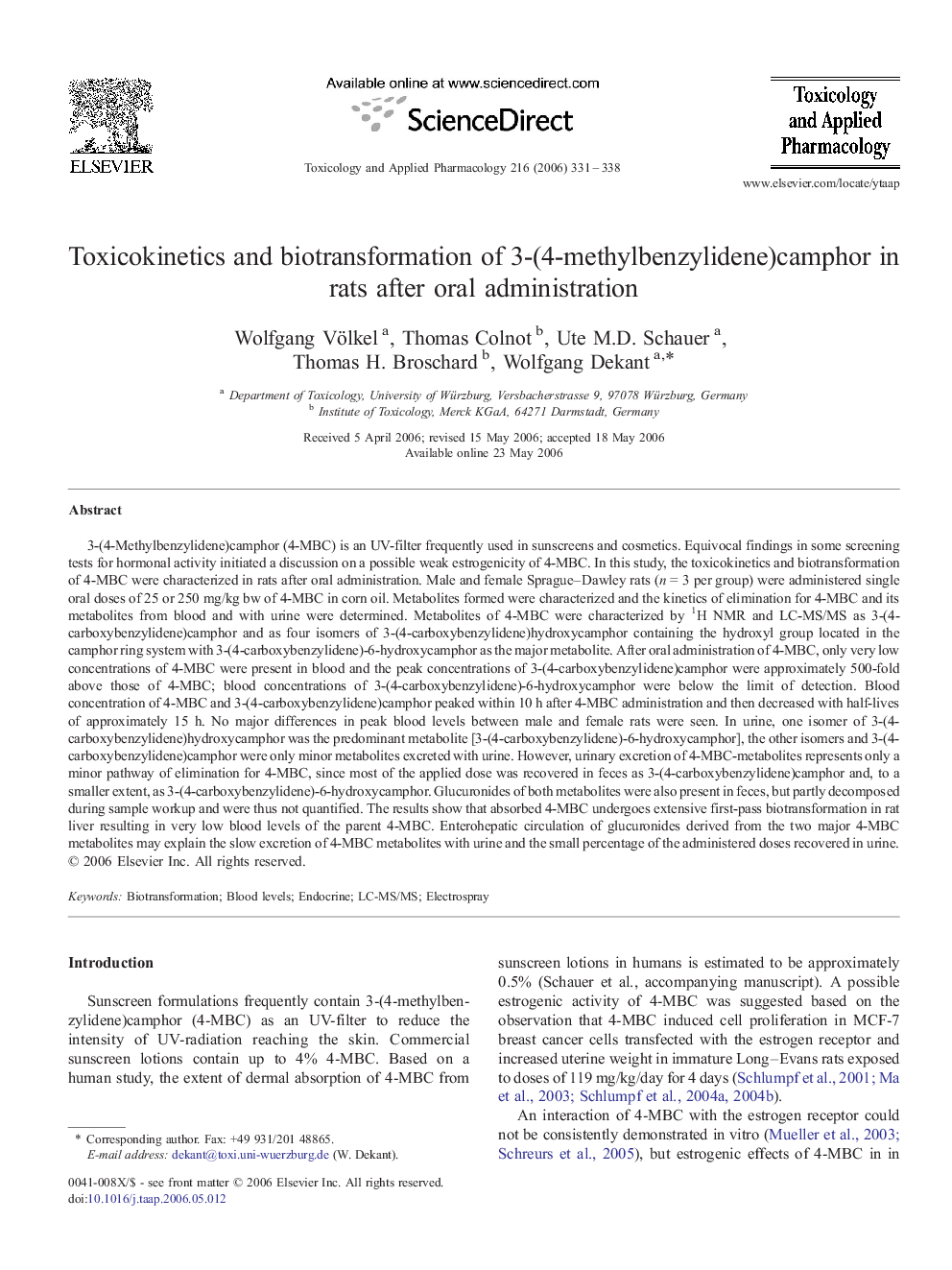| کد مقاله | کد نشریه | سال انتشار | مقاله انگلیسی | نسخه تمام متن |
|---|---|---|---|---|
| 2571797 | 1128651 | 2006 | 8 صفحه PDF | دانلود رایگان |

3-(4-Methylbenzylidene)camphor (4-MBC) is an UV-filter frequently used in sunscreens and cosmetics. Equivocal findings in some screening tests for hormonal activity initiated a discussion on a possible weak estrogenicity of 4-MBC. In this study, the toxicokinetics and biotransformation of 4-MBC were characterized in rats after oral administration. Male and female Sprague–Dawley rats (n = 3 per group) were administered single oral doses of 25 or 250 mg/kg bw of 4-MBC in corn oil. Metabolites formed were characterized and the kinetics of elimination for 4-MBC and its metabolites from blood and with urine were determined. Metabolites of 4-MBC were characterized by 1H NMR and LC-MS/MS as 3-(4-carboxybenzylidene)camphor and as four isomers of 3-(4-carboxybenzylidene)hydroxycamphor containing the hydroxyl group located in the camphor ring system with 3-(4-carboxybenzylidene)-6-hydroxycamphor as the major metabolite. After oral administration of 4-MBC, only very low concentrations of 4-MBC were present in blood and the peak concentrations of 3-(4-carboxybenzylidene)camphor were approximately 500-fold above those of 4-MBC; blood concentrations of 3-(4-carboxybenzylidene)-6-hydroxycamphor were below the limit of detection. Blood concentration of 4-MBC and 3-(4-carboxybenzylidene)camphor peaked within 10 h after 4-MBC administration and then decreased with half-lives of approximately 15 h. No major differences in peak blood levels between male and female rats were seen. In urine, one isomer of 3-(4-carboxybenzylidene)hydroxycamphor was the predominant metabolite [3-(4-carboxybenzylidene)-6-hydroxycamphor], the other isomers and 3-(4-carboxybenzylidene)camphor were only minor metabolites excreted with urine. However, urinary excretion of 4-MBC-metabolites represents only a minor pathway of elimination for 4-MBC, since most of the applied dose was recovered in feces as 3-(4-carboxybenzylidene)camphor and, to a smaller extent, as 3-(4-carboxybenzylidene)-6-hydroxycamphor. Glucuronides of both metabolites were also present in feces, but partly decomposed during sample workup and were thus not quantified. The results show that absorbed 4-MBC undergoes extensive first-pass biotransformation in rat liver resulting in very low blood levels of the parent 4-MBC. Enterohepatic circulation of glucuronides derived from the two major 4-MBC metabolites may explain the slow excretion of 4-MBC metabolites with urine and the small percentage of the administered doses recovered in urine.
Journal: Toxicology and Applied Pharmacology - Volume 216, Issue 2, 15 October 2006, Pages 331–338